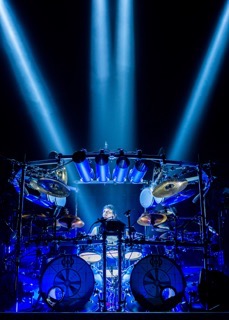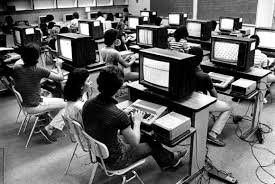Mike did not attend a music college. His father advised him to learn something else to fall back on. This was a stroke of luck, or divine intervention as choosing a 'minor’ in Computer Science proved to be the essence of all the Rhythm Knowledge main systems.
Based on experiences at college where people thought he should become a professoinal musician, he dropped out of business college to pursue music. After different attempts at getting record deals with bands, Mike returned to the computer science world and worked in the software department at the Missile Defense Division of Raytheon with no degree working on documents until he earned a full time position checking program code. Mike simulaneoulsy played in a local band. From being seen in Boston’s original music scene, he was asked by enough people to teach them drums. While working full time, he also started teaching private drum lessons.
As he took on more students, he got asked more questions that he could not answer. He realized that he also had to learn how to teach better and not just show his students what to play; he had to show them how to play. Eventually, Mike got enough students to resign from his software job to teach full time.
Mike was engrained with a positive student/teacher relationship from his private lesson teacher while attending Waltham, MA public school system, Walter Tokarczyk, was so proficient at explaining what he gave Mike to work on and most imortanly, why, that Mike’s will to practice became profoundly affected by Walter's common sense approach. Now being the teacher and a practicing musician, Mike wanted to understand how people functioned.
He began to put the pieces of R.K. together by combining a software approach to programming the human mind and body. Along with some cognitive science proofs about the human brain, he started to test his theories with himself and his students.
After seeing and documenting the effects of this approach to learning drums, Mike noted that it drastically, dramatically and quickly improved the skills of even the drummer that other teacher’s said, “you don’t have it” to. The exercises worked 100% of the time on 100% of the people who did them according to Mike’s specifics descriptions of what to think and when to think it.
Over the next decade and at the request of his students, Mike organized his many notes and lessons into a single folder called “Rhythm Knowledge.”
Per the student’s requests, the information needed to be put into the form of a book.
After joining the band Extreme, two of Mike’s students, Frank Dolan (who ended up cowriting it with Mike,) and Dana Spellman (who was also studying to be a physical therapist and entered the notes into a digital data base,) made sure he followed through with making and finishing the work.
After two years of work and printing a first set of books for his students to try out, Mike, along with Frank, revised the system and created Volumes I & II. To this day, the published versions have not changed except for a picture or two and few typos. It is still withstanding the tests of people around the world.
Fate striked again for the making of Rhythm Knowledge, Volume Three, as well as the skeleton exercises for what will be Rhythm Knowledge volumes Four and Five.
While teaching at Berklee College, Mike developed and tested what is now Volume Three. One of Mike’s students, Shawn Crowder, displayed a sense of ownership of these systems while possessing tremendous writing skills. Shawn was recruited in 2020 by Mike to pen Volumes 3, 4, and 5.



